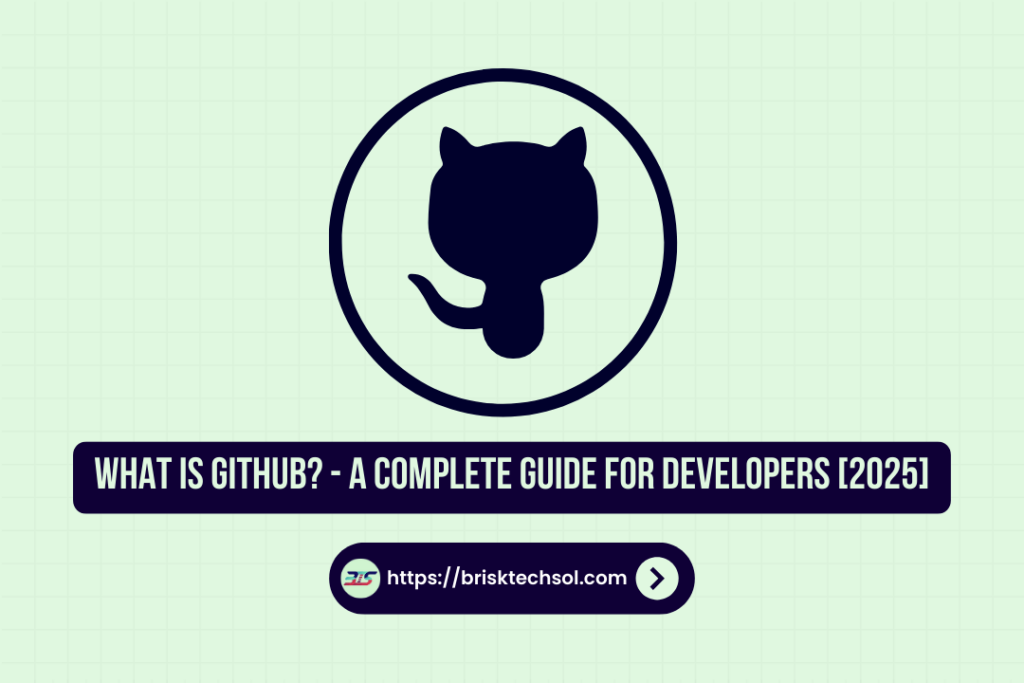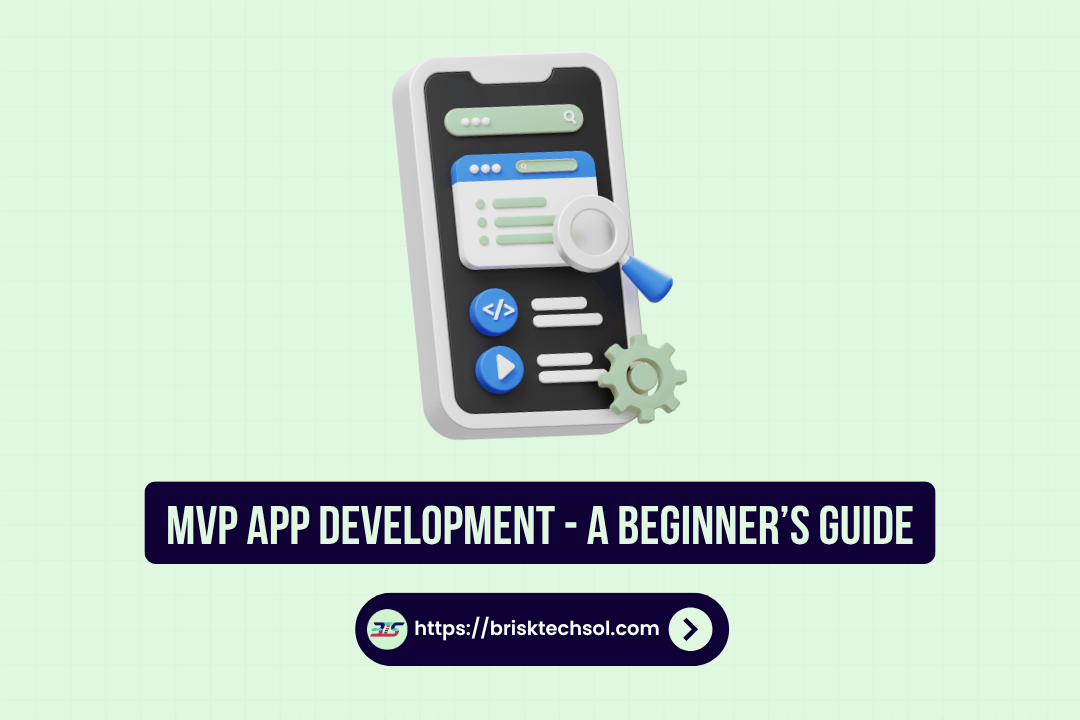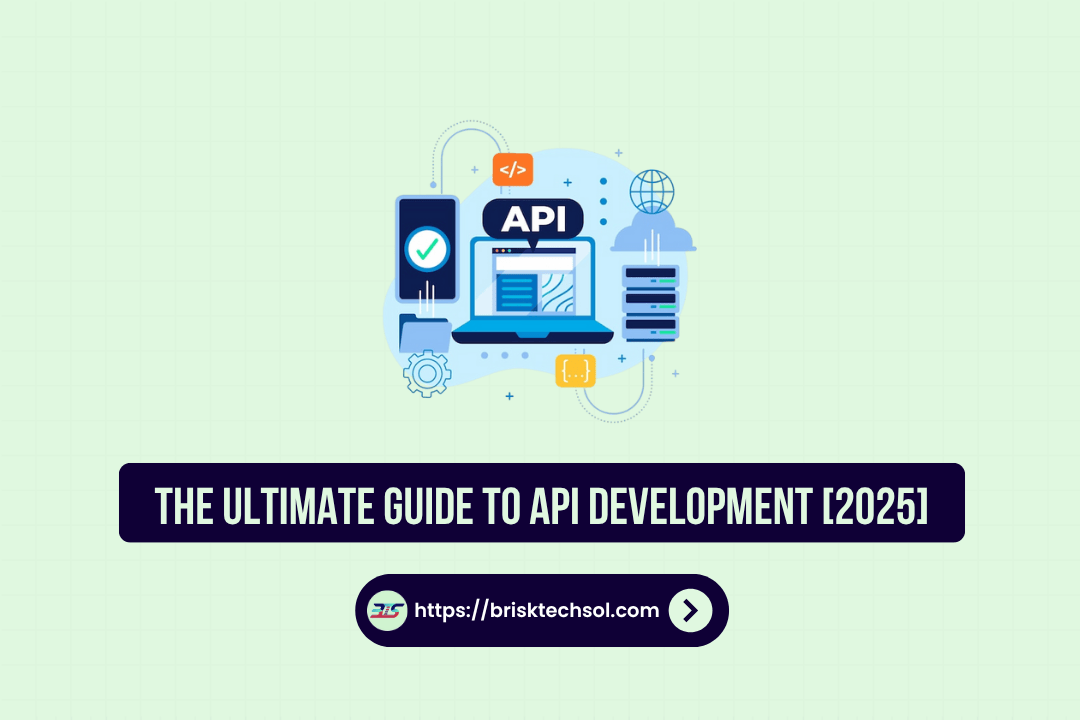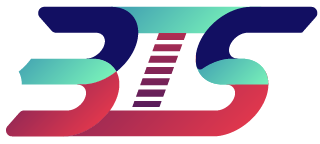GitHub has become one of the most important tools for software development. Whether you’re just starting out or already have years of experience, GitHub offers a place to store code, work together with others, and keep track of changes. In 2025, GitHub remains a key part of the coding process, with new features and easy-to-use tools that make working on projects smoother. This guide covers everything you need to know about GitHub from its basic features and benefits to best practices and advanced tips for getting the most out of the platform.
What Is GitHub?
GitHub is a cloud-based platform that helps developers store, manage, and share code. It is built around Git, an open-source system that tracks changes in code over time, allowing teams to work together more effectively. GitHub adds a variety of tools such as issue tracking, project management, code reviews, and automated workflows with GitHub Actions. This makes GitHub more than just a place to keep your code—it’s a central hub for working on projects together.
Why Use GitHub?
Using GitHub has many advantages for developers, whether you work alone or as part of a team. Here are some of the main reasons GitHub is so popular in 2025:
1. Keeping Track of Changes
GitHub uses Git to record every change made to your code. This means you can always go back to an earlier version if something goes wrong. This record of changes is useful for fixing problems and understanding how your code has evolved.
2. Working Together Easily
GitHub lets several developers work on the same project at the same time. Features like branching and pull requests allow team members to work on new ideas or fixes without affecting the main code. This way of working helps prevent conflicts and makes teamwork more efficient.
3. Reliable Code Storage
GitHub provides secure, cloud-based storage for your projects, meaning your code is safe and accessible from anywhere. Whether you’re working from home or in an office, GitHub makes sure your projects are always within reach.
4. A Large Open-Source Community
GitHub is known for its huge collection of open-source projects. Developers can share their work, learn from others, and even get noticed by potential employers. This community is a great resource for finding new ideas and learning best practices.
5. Easy Integration with CI/CD
Modern software development often uses continuous integration and continuous deployment (CI/CD) to test and launch code quickly. GitHub Actions, the built-in automation tool, works smoothly with your projects to run tests, build code, and deploy updates automatically.
6. Built-In Security
Security is very important in software development. GitHub includes features like vulnerability alerts, scanning for risky dependencies, and code review processes to help keep your projects safe. Additionally, setting up two-factor authentication (2FA) adds an extra layer of protection.
Core Features of GitHub
GitHub offers many features to support every part of the development process. Here’s a closer look at what you can do with GitHub:
1. Repositories
A repository, or “repo,” is where your project files and history are stored. You can make repositories public or private, depending on whether you want to share your work or keep it within your team. Repositories usually include a README file, which explains what the project is about, and a .gitignore file, which tells Git which files to ignore.
2. Branches
Branches let you work on different parts of your project without affecting the main version. When you create a branch, you can add new features or fix bugs without changing the stable code. Once your changes are ready, you can merge them back into the main branch through a pull request.
3. Pull Requests
Pull requests (PRs) are how changes from a branch get added to the main codebase. When you open a pull request, your team can review the changes, offer feedback, and test the updates before they are added. This process helps keep the code quality high and ensures that everyone is on the same page.
4. Issues and Discussions
GitHub provides tools for reporting bugs, suggesting new features, and discussing ideas. The issue tracker lets you manage and prioritize tasks, while the Discussions tab is a space for community conversations and sharing tips.
5. GitHub Actions
GitHub Actions is an automation tool that helps run tasks like testing, building, and deploying your code. With custom workflows, you can set up your projects to automatically run checks whenever changes are made, ensuring your code stays in good shape.
6. GitHub Pages
GitHub Pages allows you to host simple websites directly from your repositories. Whether it’s a project portfolio, a guide, or a personal blog, you can easily publish a website without needing a separate hosting service.
7. GitHub Copilot
In 2025, artificial intelligence continues to make coding easier. GitHub Copilot is an AI helper that suggests code snippets, fills in functions, and offers solutions to common coding problems. This tool can save you time and help you write better code.
Getting Started with GitHub
If you’re new to GitHub, here’s a simple guide to get you started:
Step 1: Create a GitHub Account
- Visit GitHub’s website and sign up using your email address.
- Pick a username that reflects your identity or brand.
- Complete your profile by adding a picture, a short bio, and links to your other projects or social media.
Step 2: Install Git on Your Computer
- Download Git from git-scm.com and follow the instructions for your computer.
Set up Git with your name and email using these commands:
bash
CopyEdit
git config –global user.name “Your Name”
git config –global user.email “youremail@example.com”
Step 3: Create and Clone a Repository
- Log into GitHub and click the “+” icon in the top-right corner, then select “New repository.”
- Fill in the repository details such as name, description, and whether it will be public or private.
- Optionally, initialize the repository with a README file.
To copy the repository to your local machine, use this command:
bash
CopyEdit
git clone https://github.com/yourusername/your-repository.git
Step 4: Branching and Making Changes
Create a new branch for the feature or bug fix:
bash
CopyEdit
git checkout -b new-feature
Make your changes locally, then add and save your changes with:
bash
CopyEdit
git add .
git commit -m “Add explanation for new feature”
Step 5: Submit a Pull Request
Push your branch to GitHub:
bash
CopyEdit
git push origin new-feature
- Go to your repository on GitHub and open a pull request (PR) to merge your branch with the main branch. This is a good time to ask your team for feedback and review the code together.
Advanced GitHub Tips
Once you’re comfortable with the basics, you can try these advanced tips to improve your workflow:
1. Using GitHub Projects
GitHub Projects gives you a visual board to organize tasks and track progress. Use it to manage features, keep track of issues, and assign tasks to team members. This clear view helps everyone stay on the same page.
2. Making Use of Templates
Templates for issues and pull requests help keep things organized. They remind everyone to include important details and make sure that information is consistent across your project.
3. Setting Up Code Reviews and Automated Testing
Establish a routine for reviewing code before merging changes. Pair this with automated testing through GitHub Actions so that every update is checked for errors, keeping your project reliable.
4. Connecting Third-Party Tools
GitHub works well with many other tools. You can connect it to apps like Slack for notifications, JIRA for project tracking, or cloud services for deployment. These connections can make your workflow smoother and more efficient.
5. Customizing Workflows with GitHub Actions
GitHub Actions lets you create custom steps for your projects. Set up actions to run tests, check your code style, or deploy your project automatically. With a few adjustments in the workflow settings, you can tailor GitHub to fit your exact needs.
Best Practices for Using GitHub
To get the most out of GitHub, here are some best practices to follow:
1. Write Clear Commit Messages
When you save changes, write a brief message that explains what was done and why. Clear commit messages make it easier to understand the history of your project.
2. Use Branches Wisely
Create different branches for new features, bug fixes, or experiments. This keeps the main branch stable and makes it easier to manage changes.
3. Review Code Carefully
Before merging any changes, make sure the code is reviewed thoroughly by your team. This helps catch mistakes early and ensures that the code meets quality standards.
4. Keep Documentation Updated
Good documentation is key. Update your README file regularly, add clear guidelines for contributing, and make sure all code comments are easy to understand. This helps everyone, especially new team members, get up to speed quickly.
5. Enable Security Settings
Turn on security features like two-factor authentication (2FA) and use tools to check for vulnerable code or dependencies. Keeping your project secure should always be a top priority.
6. Engage with Others
Join the GitHub community by contributing to open-source projects, participating in discussions, and sharing your work. This not only improves your skills but can also lead to new opportunities and connections.
How to Make the Most of Your GitHub Experience
As you grow more familiar with GitHub, consider these tips to improve your workflow and learning:
1. Build a Strong Profile
Your GitHub profile is like your online portfolio. Keep it updated with your best projects, contribute to popular repositories, and join discussions. A well-maintained profile can open doors to job opportunities and professional connections.
2. Join the Developer Community
Participate in conversations on GitHub, join forums, and attend community events or webinars. Engaging with other developers is one of the best ways to learn new tips, share your own experiences, and get feedback on your projects.
3. Explore GitHub Marketplace
GitHub Marketplace offers many tools and apps that can boost your productivity. Whether you need help with project management, code analysis, or testing, you can find tools that integrate directly with your GitHub workflow.
4. Keep Learning
The world of technology is always changing. Stay updated with new GitHub features by following blogs, watching tutorials, and trying out new tools. Whether it’s getting better with Git commands or trying out AI tools like GitHub Copilot, continuous learning is key.
Conclusion
GitHub isn’t just a code storage site it simplifies teamwork with tools like version control, branching, and pull requests. In 2025, its user-friendly features and integrations continue to make coding smoother. Whether you’re building your skills, portfolio, or contributing to open-source projects, GitHub provides the support you need to succeed.
FAQ’s
Is GitHub free to use?
Yes, GitHub offers a free plan that includes unlimited public and private repositories. There are also paid plans with extra features, such as better security options and more storage, for teams and businesses.
What is the difference between Git and GitHub?
Git is the system that tracks changes in your code, while GitHub is the platform that hosts your Git repositories and provides tools to work together and manage projects.
Can I use GitHub without Git?
You can use the GitHub website for many tasks, but using Git on your computer gives you more control and makes it easier to work on projects efficiently.
How do I contribute to open-source projects on GitHub?
To contribute, fork the repository you’re interested in, create a new branch for your changes, and then submit a pull request. Be sure to follow the project’s guidelines and code standards.
Is GitHub secure for storing my code?
GitHub takes security seriously with built-in measures to protect your code. However, it’s a good idea to keep sensitive data out of your public repositories and to use additional security features when needed.
What are GitHub Actions, and why should I use them?
GitHub Actions lets you set up custom workflows that automatically run tests, build your project, and deploy changes. This makes your work faster and ensures that your code is always checked before it goes live.
How can I keep my repository organized?
Maintain a clear folder structure, use meaningful branch names, write detailed commit messages, and update your project documentation regularly. Using labels and milestones for issues and pull requests can also help keep things organized.









